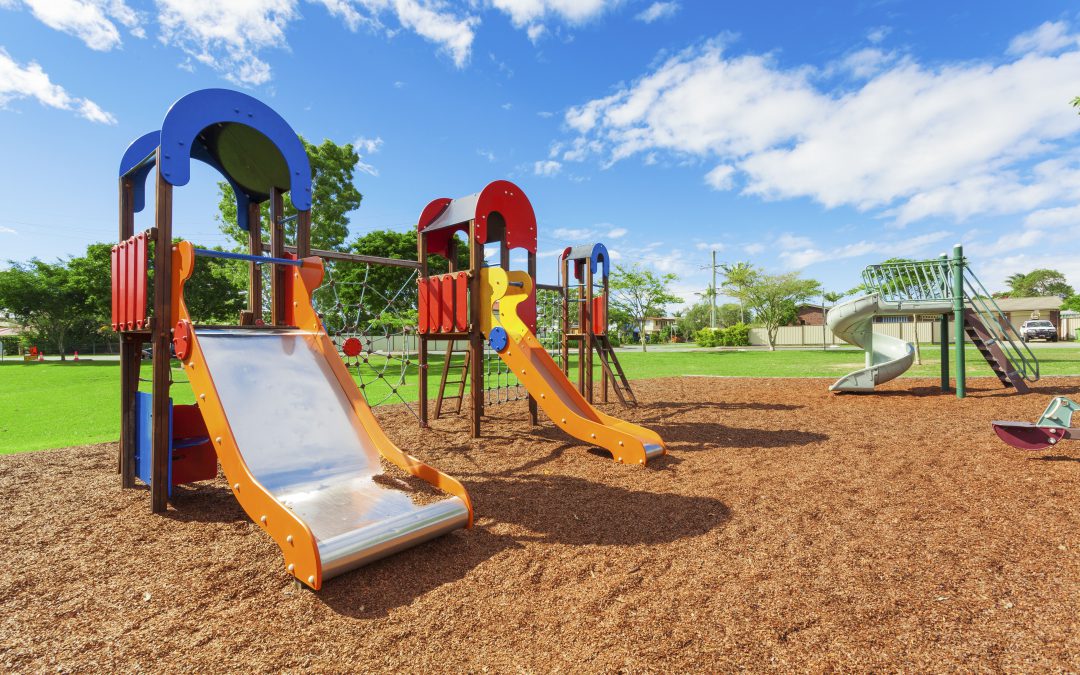Councils face exposure to any number of risks resulting from high playground temperatures. New research findings put these risks into perspective, with Members urged to consider remedial action.
A report published by Western Sydney University last year found that local playgrounds are reaching temperatures beyond that for safe child play. This presents a challenge for councils looking to limit their exposure to risks and claims resulting from playground injuries.
The Cool Schools Initiative (CSI) report noted that even on summer days with average temperatures of around 30°C, playground equipment can heat-up enough to cause severe burns.
The key researcher, Sebastian Pfautsch, observed surface temperatures of playground equipment at childcare centres in Parramatta, Penrith and Richmond with some surprising results. Dr Pfautsch measured artificial turf surfaces at up to 98°C in direct sunlight – just a couple of degrees short of boiling water. A sun-exposed rubber tyre had a reading of 105°C.
He also found soft fall, a common playground surface material, can reach over 80°C in the sun on a 35°C day. The temperature of astroturf at one childcare centre reached 89.6°C (37°C day). Even woodchip ground cover was measured at 74.4°C when the air temperature was 35°C.
You can imagine the potential damage to a child’s skin in a very short amount of time.
Conversely, grass and sand surfaces fared much better in direct sunlight; rarely rising more than 10°C above the air temperature.
Of little surprise, the report found that shade plays a huge role in reducing surface heat of playground equipment. Unfortunately, adequate shade is a protective element missing from many playgrounds in NSW.
Playground Star Rating System
Dr Pfautsch and his team are looking to implement a zero to five star rating system for playgrounds. The rating system will standardise the measurement of playground performance and safety in high temperatures.
To illustrate the scale, aquatic parks are anticipated to get the full five stars. Full sun exposed playgrounds of a north-facing orientation with metal equipment would attract a minimal rating.
The rating system should be ready late 2019 or early 2020. We’ll do our best to keep you informed of its progress and how Members can best utilise it.
Tips for Members
High temperature records have been broken year on year over the past decade. Measured at Observatory Hill in Sydney, there were seven, six and 12 days above 35°C from 2015 – 2017 respectively. This contrasts with the average annual days over 35°C from 1859 – 2017 being 3.1. Some experts predict 2019 to be the hottest year on record for Australia.
Specific to the impact that increasing temperatures have on playgrounds, this all presents significant risk exposure for Members. The good news is there’s much you can do to help the kids in your community get the most out of playgrounds and minimise liability claims at the same time.
When building or improving playgrounds, you may want to consider the following:
Shade
Get a good balance of shade options. Trees and metal awnings offer the best source of shade. Shade cloth comes in a close second with the added bonus of flexible orientation options. Have a look at this fact sheet from the Child Accident Prevention Foundation of Australia.
Orientation
Avoid playground equipment facing north/north-east as they will be bathed in direct sunlight throughout the day. This is especially the case for metal slides.
Colour
Consider the colour of equipment. Dark or black colours absorb heat more intensely than lighter shades.
Materials
Choose materials wisely. Metal will absorb heat like crazy. Composite plastic is durable for other types of equipment and is a good all-rounder. Wood is a great structural option but is expensive and requires continual maintenance.
Ground cover
Soft fall helps minimise fall injuries yet can heat up quickly. This is the same with astroturf. Grass and sand absorb the least heat.
More Information
Our Best Practice Manual for Playgrounds features a section on shade and sun protection. When looking at shade options, the manual suggests Members consider factors such as:
- UV Radiation;
- Built shade;
- Natural Shade;
- Existing shade;
- Site usage patterns;
- Climatic conditions;
- Seasonal conditions; and
- Indirect UV Radiation.
Please speak with your Regional Risk Manager if you have any further questions.

